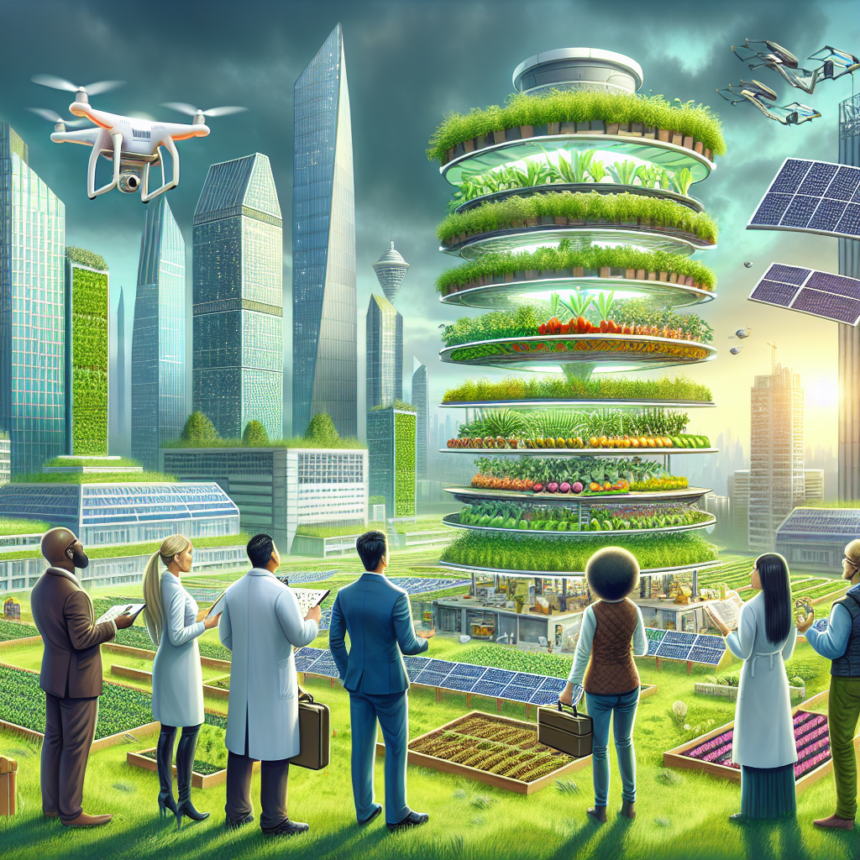In recent years, the agricultural landscape has undergone significant transformation, primarily due to the pressures of climate change, urbanization, and the increasing global population. As we look for sustainable solutions to meet food demands, vertical farming has emerged as an innovative approach that’s revolutionizing the way we produce food. By using vertically stacked layers to cultivate crops, vertical farming presents a promising alternative to traditional agriculture.
What is Vertical Farming?
Vertical farming involves growing crops in vertically stacked layers, using techniques that often integrate soil-less farming methods such as hydroponics, aeroponics, and aquaponics. These systems can be set up in urban environments, near consumers, reducing transportation costs and the carbon footprint associated with shipping food over long distances.
Benefits of Vertical Farming
Space Efficiency
One of the main advantages of vertical farming is its ability to maximize space. Traditional farming requires vast tracts of land, but vertical farms can produce the same quantity of food in much smaller areas. This is particularly beneficial in densely populated cities where arable land is scarce. For example, a vertical farm can operate on a single rooftop, and produce the same volume of crops that would typically require acres of farmland.
Year-Round Production
Vertical farming allows for year-round crop production, regardless of weather conditions. With controlled environments, farmers can manage temperature, humidity, and light. This results in fewer crop failures and consistently available fresh produce. Moreover, crops can be harvested multiple times a year, drastically increasing yield.
Water Conservation
Conventional agriculture uses massive amounts of water, often resulting in depletion of natural water sources. In contrast, vertical farming systems utilize up to 90% less water through recirculation methods. This efficient water use is crucial, especially in regions facing water scarcity.
Reduced Use of Pesticides
Vertical farms typically employ organic farming methods and integrated pest management techniques. The controlled environment minimizes the risk of pests and diseases, thereby reducing the reliance on harmful pesticides and fertilizers. This not only results in healthier crops but also benefits consumers who are increasingly concerned about food safety and chemical residues.
Accessibility and Local Eating
With vertical farms being easily establishable in urban settings, they promote the concept of local eating. Fresh produce can be harvested just hours before reaching consumers. This minimizes transportation and lowers carbon emissions, while also supporting local economies.
Challenges Ahead
Despite its transformative potential, vertical farming is not without challenges. High startup costs, technological complexities, and energy consumption, are all factors that must be addressed for vertical farming to be sustainable long-term. Additionally, while many crops grow well in vertical systems, some, such as larger fruits and grains, may not be suited for this method. Ongoing research and technological advancements will be crucial for overcoming these hurdles.
Innovations on the Horizon
As the field of vertical farming continues to evolve, so too does the technology and techniques used. Innovations such as AI-driven climate control systems, advanced LED lighting for optimized growth, and even robotics for harvesting are being integrated into vertical farms. These developments promise to enhance efficiency and reduce operational costs, paving the way for broader adoption.
Conclusion
Vertical farming is poised to revolutionize the agricultural sector and help address the pressing challenges of food production in the 21st century. By maximizing space, conserving resources, and decreasing food miles, this innovative approach provides a pathway towards a more sustainable and resilient food system. As technology and practices continue to advance, vertical farming may very well be a cornerstone of how we feed the growing global population.
FAQs
1. What crops are best suited for vertical farming?
Leafy greens (like lettuce and spinach), herbs, strawberries, and microgreens are most commonly grown in vertical farms. However, research is ongoing to explore the viability of larger crops.
2. Is vertical farming expensive?
While initial investment can be high due to the technology and infrastructure required, operational costs are decreasing as technology improves. Moreover, the reduction in water and transportation costs can offset some of the expenses over time.
3. How does vertical farming impact the environment?
Vertical farming can significantly reduce the carbon footprint of food production by minimizing transportation needs and water consumption, while also reducing pesticide use.
4. Can vertical farms operate in any environment?
Yes, vertical farms can be established in urban areas, warehouses, or even abandoned buildings. The flexibility of design allows them to adapt to different spaces.
5. Are vertical farms sustainable in the long run?
With continued advancements in technology and practices, vertical farming has the potential to be a sustainable solution for food production, balancing efficiency with environmental considerations. However, ongoing research is needed to ensure long-term viability.









